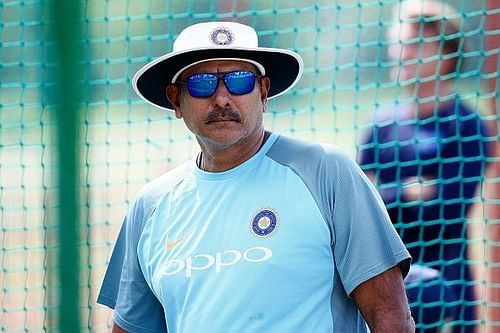
Analysing Ravi Shastri's first season as India coach

12 months in a normal sense of the word cannot be considered a long enough period of time for a dramatic change to occur in any walk of life.
However, as far as Indian cricket is concerned, the tables can turn completely in the same period, as has been the case in the last one year.
At this time last year, India were coming to the end of a very successful home season, which saw them lose just one Test match.
The phase also saw the emergence of a successful, new partnership between Virat Kohli and Anil Kumble, who in his first stint as international coach, worked wonders with the Indian side.
However, even as the team dished out victories on the field, few knew about the storm brewing inside, and that came out flush in the open during the Champions Trophy, where despite India reaching the finals, the talk surrounding the side was only about the rift.
Post the event, Kumble resigned and Ravi Shastri took over as the coach of a side he knew well, having served as the Director of Cricket for over a year, prior to the former's appointment.
India dominate at home, show good signs away
In a season spanning just under nine months, the team under the partnership of Kohli and Shastri have done few things wrong as far as results are concerned.
The team have lost just two Test matches, both coming on the tour to South Africa, both of which they could've won had they played smarter cricket.
In ODIs, India lost just four matches and in T20Is, they were on the losing side only twice.
The team have just the one series so far in South Africa and look to be building well for future challenges.
If the previous season was categorised by Cheteshwar Pujara, Ravichandran Ashwin and Ravindra Jadeja, under Shastri, the likes of Shikhar Dhawan, Yuzvendra Chahal and Kuldeep Yadav have emerged as genuine match-winners.
The enigmatic story of Dhawan finally seemed to be headed the right way throughout duration of the season in limited-overs cricket, as he made 582 runs in 12 games at 58.20, his best returns in a season since 2014/15.
It was public knowledge that the left-hander had it in him to make impactful contributions, but this season, those exploits have come more consistently and India lost just one game when he made a score in excess of 50.
When Shastri replaced Kumble as coach, one of his challenges was to ensure India found a settled spin bowling combination, after Ashwin and Jadeja proved to be ineffective in the Champions Trophy.
In Kuldeep and Chahal, the team experimented with a double wrist-spin combination and the pair, since playing together for the first time on the tour to Sri Lanka, have only grown from strength-to-strength.
In the 13 matches that Kuldeep has played with Chahal in the team, he has accounted for 29 wickets at an average of 18.75
Chahal's numbers with Kuldeep in the same side are similar - 26 wickets at 19.73.
These scalps came not just on Indian wickets that had assistance for them, but also in South Africa.
Shastri, along with Kohli, can certainly take credit for giving these wrist spinners a long rope and it now remains to be seen how Ashwin, Jadeja and others claw their way back into the side with these two bowling so well.
Emergence of a fighting Indian unit
Barring the above three, Hardik Pandya's growth as a cricketer, Bhuvneshwar Kumar's evolution as a seam-bowling all-rounder and Jasprit Bumrah becoming an all-format cricketer have also been positives in the past season.
If Kumble brought accountability to this side during his time, Shastri has brought in a fighting spirit that was missing in Indian teams, especially overseas in the recent past.
India may have lost the Test series in South Africa, but in none of those losses were they outplayed and had it not been for certain errors in selection, they might have beaten South Africa in their own den.
In Johannesburg, India refused to throw in the towel on a pitch that was dicey, to say the least, clinching a morale-boosting win, the momentum of which they carried into the limited-overs series, winning it comprehensively.
The challenges that lie ahead
The tour to the rainbow nation was only one part of a long, overseas test for India, the next stop of which will be England in July.
Shastri's next test now will be to get this team to win, not just the sporadic matches, but clinch Test series abroad.
Most of the players in the present bunch seem to have evolved considerably as players since the last time they went on these tours and the time seems ripe for them to create a legacy of their own.
In most interviews, Shastri has often been heard speaking about how the next 18 months would define this team.
It would not be wrong to state the same line, replacing team with coach for him either.
In a career where he has won a World Cup, been crowned the 'Champion of Champions' and also enjoyed a successful stint inside the commentary box, his success as a coach would only add a fresh high to an already-acclaimed CV.
From an off-the-field perspective, if Shastri could keep his outspoken ways away and provide more perspective to the team's blueprint moving forward, it would help everyone.
In his maiden season as India's coach, I give him an 8.5/10.